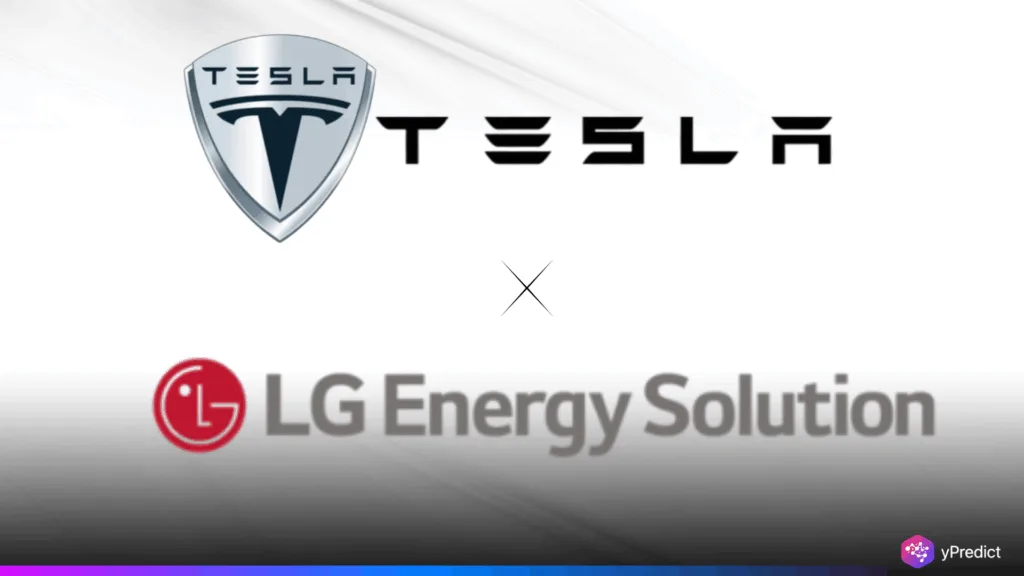
Tesla is taking a bold step toward localizing its supply chain via a $4.3 billion battery agreement with South Korean part supplier LG Energy Solution. The agreement will help the manufacturer reduce its Chinese battery reliance as trade tensions worsen and tariffs are proposed on China-linked imports. The LG Energy battery agreement signals Tesla’s first major change in its global sourcing strategy by agreeing to battery supply from the U.S.
Sources that are familiar with the agreement stated that LG Energy will supply Tesla lithium iron phosphate (LFP) batteries from its Michigan facility and these batteries are meant specifically for energy storage systems (ESS) and not electric vehicles. Tesla’s energy storage division is doing well as sales slow for car sales while demand increases, making it plausible for Tesla to increase its efficiency in the U.S. and hedge against potential disruption related to China.
Why Tesla Is Shifting Battery Supply to the U.S.
Tesla has openly acknowledged that U.S. tariffs on Chinese goods hit its energy business especially hard. The company previously relied heavily on Chinese suppliers for LFP batteries, which are cost-effective and widely used in grid storage. Chief Financial Officer Vaibhav Taneja noted in April that Tesla would increase sourcing from non-China suppliers, but that such shifts would take time.
The new LG Energy battery deal fits that strategy. It offers a secure, tariff-free source of LFP batteries manufactured domestically. The deal is set to run from August 2027 to July 2030, with an option to extend up to seven years and scale volumes. This flexibility allows Tesla to adapt based on future demand for Tesla energy storage products, which are gaining traction as AI data centers and clean energy infrastructure expand globally.
LG Energy Grabs First-Mover Advantage in U.S. Market
LG Energy started LFP battery production at its Michigan plant in May 2025, becoming one of the first non-Chinese firms to do so at scale in the U.S. While rivals like Samsung SDI and SK On have announced intentions to enter the U.S. LFP space, LGES currently enjoys a clear head start. Analysts say this gives LGES a strong market position as U.S. demand for grid-scale batteries rises.
To meet changing market needs, LG Energy may convert some of its EV battery production lines to ESS-focused lines. This shift comes as electric vehicle sales slow across major markets. Tesla, meanwhile, continues to promote energy storage as a core growth area, accounting for just over 10% of total revenue but growing faster than its vehicle segment.
U.S. and South Korea Push to Beat Tariff Deadline
This battery deal also comes amid renewed trade discussions between South Korea and the United States. With a 25% tariff set to apply to certain Korean imports starting August 1, South Korean officials recently met with U.S. Commerce Secretary Howard Lutnick to negotiate terms. The LG Energy battery deal could help secure stronger trade relations, especially as South Korean firms ramp up U.S. operations to avoid tariff penalties.
In an additional move this week, Tesla inked a $16.5 billion agreement to procure chips from Samsung Electronics’ Texas facility. Combined, these agreements are all part of a broader strategy to untether Tesla’s supply chain from China, and to find suppliers (manufacturers) within the U.S. and its allied countries.
Energy Storage Powers Tesla’s Growth Plans
During Tesla’s latest earnings call, CEO Elon Musk highlighted the enormous long-term potential of Tesla energy storage solutions, saying, “Energy is ramping great despite challenges from tariffs and supply chain issues.” Musk discussed that first, the demand for batteries, especially for grid storage and AI-based infrastructure, is enormous and underappreciated.
Though Tesla is constructing their first in-house LFP battery plant in Nevada, that facility will fulfill only a small portion of the increasing demand. The LG Energy battery deal helps fill that demand quickly and reliably, with scale, as well as compliance with US trade rules and continuity of supply.





